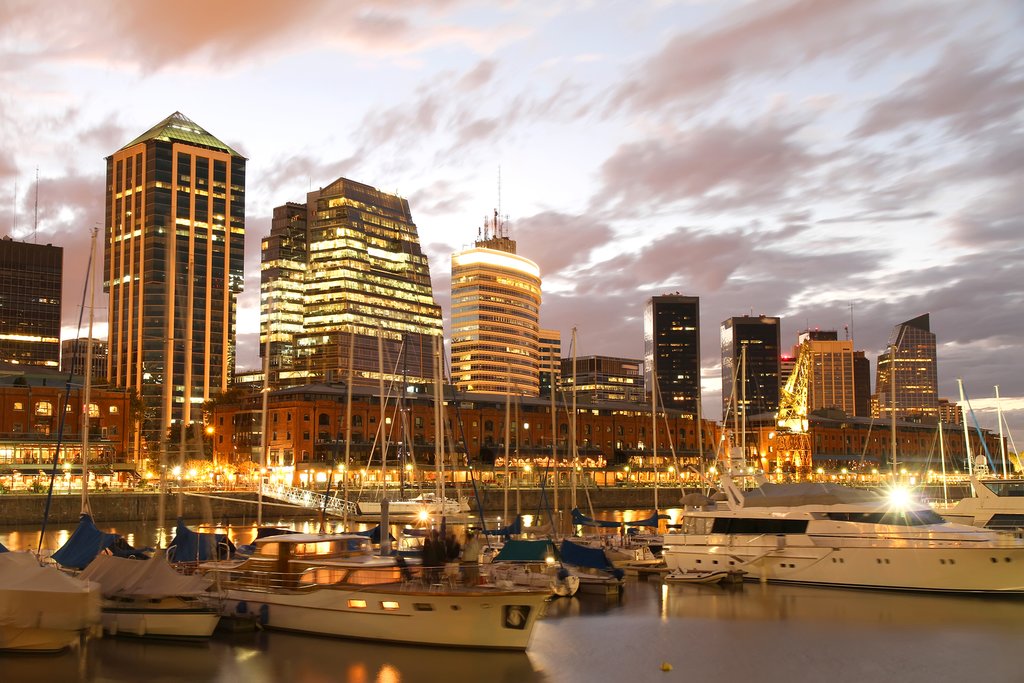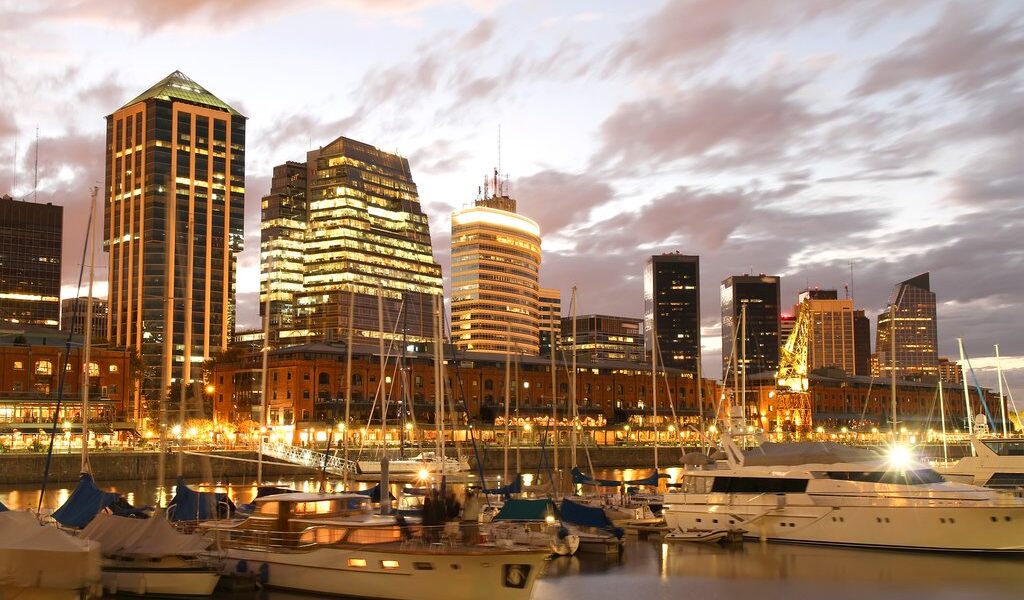
Gritty and glamorous at once, Buenos Aires is a thrill for tango enthusiasts and carnivores — and for fútbol fans, wine drinkers, literary types, urban cyclists, and architecture aficionados, to name just a few. There’s so much to see and do in the Argentinian capital, but you can’t go wrong with this classic list of cultural and gastronomic highlights.
## Experiencing the Allure of Buenos Aires: A Deep Dive
Buenos Aires, a sprawling metropolis nestled in the heart of South America, beckons travelers with its vibrant culture and captivating charm. The sheer size of the city can be initially overwhelming, with key attractions scattered across its diverse landscape. Navigating Buenos Aires requires careful planning, as traffic congestion can be a significant hurdle. Public transportation, particularly the subway system, while efficient, can become overcrowded during peak rush hour periods.
For travelers drawn to the rich tapestry of history and the passionate rhythms of tango, the neighborhoods of San Telmo and Recoleta offer distinctly appealing experiences. San Telmo, situated near the city’s downtown core, exudes a timeless appeal with its cobblestone streets, reminiscent of a bygone era. Classic cafes line these historic streets, offering havens for relaxation and contemplation, while antique shops overflow with treasures waiting to be discovered. In contrast, Recoleta presents a more refined atmosphere, characterized by its elegant Parisian-style architecture and upscale boutiques that cater to discerning tastes.
Visitors seeking a more contemporary and bohemian vibe will find their niche in Palermo Soho and Palermo Hollywood. These trendy neighborhoods are havens for street art, showcasing the city’s creative spirit through colorful murals and innovative installations. Modern design permeates the cafes and cocktail bars, providing stylish settings for socializing and relaxation.
### Embracing the Tango: A Dance with Destiny
Tango, the iconic dance form, serves as the very heartbeat of Buenos Aires. Its passionate embrace and intricate steps embody the soul of the city. For first-time visitors eager to immerse themselves in the tango scene, understanding the nuances of this art form is essential.
Tango transcends mere dance; it’s a profound musical style, intrinsically woven into the fabric of Argentine culture. Both the dance and the music evolved together, originating in the working-class port neighborhoods of Buenos Aires and Montevideo. This shared history has imbued tango with a spirit of resilience, passion, and raw emotion.
To experience tango, several avenues are available. Tango shows, designed for tourists, offer a visually stunning spectacle, though they may lack the authenticity sought by discerning enthusiasts. For a more genuine encounter, venturing into a milonga, a tango club, is highly recommended. These vibrant spaces are where locals gather to dance the real tango, their movements fluid and captivating. If fortunate, you may witness an orquesta típica, a traditional tango orchestra, filling the air with melancholic melodies. Alternatively, the timeless voice of Carlos Gardel, a tango legend, might resonate through the sound system, evoking the spirit of the past.
At a milonga, participation in the dance is not mandatory. You can comfortably observe from the sidelines, savoring a glass of wine while immersing yourself in the captivating atmosphere. However, if someone extends an invitation to dance, accepting is considered a gesture of respect and a chance to embrace the tango experience.
### Indulging in Coffee Culture: A Sip Through History
Buenos Aires boasts a remarkable collection of historic cafes and bars, each possessing its own unique character and charm. The city recognizes the cultural significance of these establishments, maintaining an official register of 92 “Bares Notables,” historic cafes that have stood the test of time. Numerous other cafes, while not officially listed, contribute to the city’s vibrant coffee culture. These timeless establishments remain open throughout the day, offering a welcoming respite for various occasions. Whether it’s a morning coffee to kickstart the day, an afternoon tea or vermouth for a moment of relaxation, or an evening glass of wine accompanied by a picada, a selection of cheeses and cold cuts, these cafes cater to every mood and desire.
### The Steakhouse Experience: A Carnivorous Celebration
A visit to Argentina remains incomplete without indulging in a traditional Argentine steakhouse experience. A feast of grilled steak, paired with a robust bottle of Malbec and an assortment of traditional side dishes, is a rite of passage for any traveler. Whether you secure a reservation at one of the city’s renowned steakhouses or opt for a more casual meal at a hidden gem, you’ll be presented with a variation on the same culinary theme.
Begin your meal with a selection of appetizers, ranging from savory empanadas to provoleta, a grilled slab of provolone cheese seasoned with spices. Next, choose your cut of beef from a seemingly endless array of options. Classic cuts like bife de chorizo, strip steak, or ojo de bife, rib eye, are guaranteed to please. A refreshing side salad and crispy French fries are considered essential accompaniments, as is a bottle of sparkling water and a well-chosen bottle of wine.
### Exploring on Two Wheels: Bicycling Through Buenos Aires
Buenos Aires has embraced cycling in recent years, evolving into an increasingly bike-friendly city. The government has invested in the construction of new infrastructure, resulting in a network of bike lanes crisscrossing the city. A bike share program is also available, although accessing it as a tourist can present some challenges.
Renting a bicycle from one of the numerous outfitters throughout the city is generally the most convenient option for visitors. On your initial outing, embarking on a guided tour is highly recommended. This allows you to gain an overview of the city’s layout and discover hidden gems that might otherwise be missed.
### Unearthing Treasures in San Telmo: A Journey Through Antiques
One of the quintessential Buenos Aires experiences is attending the San Telmo street fair on Sundays. On this day, the neighborhood’s main thoroughfare is closed to traffic, transforming into a vibrant marketplace. Antique vendors, artisans, and artists set up temporary stalls, offering a diverse array of wares for sale. It’s the perfect place to find a unique souvenir, discover a hidden treasure, or simply soak in the lively atmosphere. Catching a live tango performance in the street adds to the enchantment of the fair. The restaurants and bars surrounding the fair provide ideal settings for enjoying lunch, an afternoon coffee, or a refreshing ice cream.
Even if you cannot visit on a Sunday, the San Telmo market, a covered space that showcases antiques and food, is a must-see. It doubles as an architectural landmark, providing a captivating backdrop for browsing through old tango posters and antique glassware.
### The Allure of Palermo: Boutiques, Bars, and Beyond
Palermo, often divided into Palermo Soho and Palermo Hollywood, is a sought-after neighborhood renowned for its exceptional shopping and dining experiences. A leisurely stroll through the area will lead you to charming coffee shops, tempting heladerías, ice cream shops, bookstores filled with literary treasures, and stores showcasing local art and design. Sunny terraces beckon you to relax over a refreshing gingery lemonade or a cold beer, savoring the vibrant atmosphere of the neighborhood.
### Paying Respects at Recoleta Cemetery: Visiting Evita’s Grave
Eva Perón, a figure of immense historical significance, is among the many prominent Argentines resting in the Cementerio de la Recoleta. This striking landmark is often hailed as one of the world’s most remarkable cemeteries. Stepping through the grand neoclassical gates, you’ll find yourself immersed in a labyrinth of elaborate marble mausoleums, designed in a range of architectural styles, including Art Deco, Baroque, and Art Nouveau.
### Experiencing Fútbol: Passion on the Pitch
For sports enthusiasts, attending a fútbol, soccer, match in Argentina is a truly unforgettable experience. In Buenos Aires, you have the opportunity to witness a game at one of two iconic stadiums, each representing a fierce rival team. River Plate, located in the northern part of the city, is the larger of the two stadiums. La Bombonera, the Candy Box, situated in the working-class neighborhood of La Boca, is known for its fervent atmosphere.
Regardless of which stadium you choose, it’s highly recommended to attend the match with a group or as part of an organized tour. Navigating the stadiums can be challenging for those unfamiliar with the local customs, and having the guidance of a local friend or tour guide is invaluable.
### Embracing the Night: Navigating the Boliches
Buenos Aires has earned a reputation for its vibrant nightlife scene, where dancing and drinking continue until the early hours. While the nightclub circuit primarily attracts younger crowds, known as porteños, a diverse array of nightlife venues, including bars and tango clubs, remain open late into the night.
If you’re eager to explore the boliche, nightclub, scene, it’s important to plan accordingly. Many of the most renowned venues are located along the river, somewhat removed from other attractions in the city. Fortunately, Uber operates in Buenos Aires, offering a convenient alternative to taxis for navigating the city at night.
B-79

